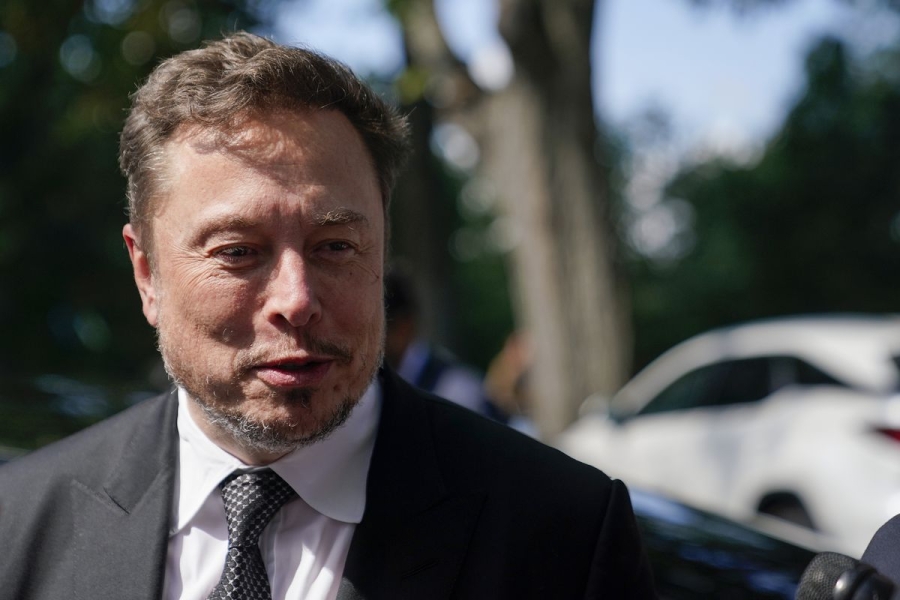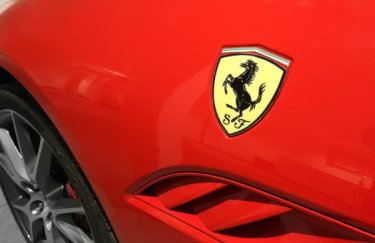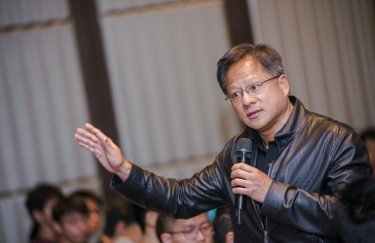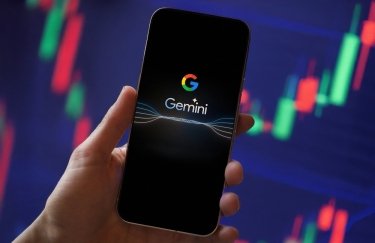In Walter Isaacson’s buzzy new biography, Elon Musk emerges as a callous, chaos-loving man without empathy.

Constance Grady is a senior correspondent on the Culture team for Vox, where since 2016 she has covered books, publishing, gender, celebrity analysis, and theater.
There’s a recurring phrase in Walter Isaacson’s new biography Elon Musk. Certain things, Isaacson writes again and again in his dense and thoroughly reported book, are simply “in Musk’s nature,” while others are “not in his nature.” This is a book in which Elon Musk — the richest man in history and surely one of the most infuriating, too — is driven by an immovable internal essence that no one can alter, least of all Musk himself.
Things that are in Musk’s nature according to Isaacson: the desire for total control; obsession; resistance to rules and regulations; insensitivity; a love of drama and chaos and urgency.
Things that are not in Musk’s nature according to Isaacson: deference; empathy; restraint; the ability to collaborate; the instinct to think about how the things he says impact the people around him; doting on his children; vacations.
“He didn’t have the emotional receptors that produce everyday kindness and warmth and a desire to be liked. He was not hardwired to have empathy,” Isaacson writes. “Or, to put it in less technical terms, he could be an asshole.”
The great question of Isaacson’s book is more or less the same question he posed in his 2011 biography of Steve Jobs: Is the innovation worth the assholery? Can we excuse Jobs’s cruelty to his partner Steve Wozniak because we have the iPhone? Can we excuse Musks’s many sins — his capricious firings, his callousness, his willingness to move fast and break things even when the things that get broken are human lives — because after all, he opened up the electric car market and reinvigorated the possibility for American space travel? Is it okay that Musk is an asshole if he’s also accomplishing big things?
“Would a restrained Musk accomplish as much as a Musk unbound?” Isaacson muses in the final sentences of the book. “Could you get the rockets to orbit or the transition to electric vehicles without accepting all aspects of him, hinged and unhinged? Sometimes great innovators are risk-seeking man-children who resist potty training.”
A hundred pages earlier, Isaacson depicted the man he describes as “resisting potty training” personally making the call that Ukraine should cede Crimea to Russia and on those grounds declining to extend satellite services to the Ukrainian military in the disputed territory.
“Risk of WW3 becomes very high,” Musk explained in a private exchange with Ukraine’s Vice Prime Minister Mykhailo Fedorov.
“We look through the eyes of Ukrainians,” Fedorov responded, “and you from the position of a person who wants to save humanity. And not just wants, but does more than anybody else for this.”
The risk-seeking man-child has amassed the power to have world leaders fawn over his unilateral judgment.
Isaacson portrays Musk as someone who loves chaos and has no empathy
Elon Musk was born in Pretoria, South Africa, in 1971. His mother was a model who spent most of her time at work; his father was an engineer and a wheeler-dealer with a violent temper. They sent Elon to nursery school when he was 3 because he seemed intelligent.
Musk was not, however, socially gifted. Isolated and friendless, he was prone to calling his peers stupid, at which point they would beat him up. He took refuge reading his father’s encyclopedia, plus comic books and science fiction novels about single-minded heroes who saved mankind.
For Isaacson, all this is the kind of foreshadowing biographers dream of. Most foreboding is the existence of Musk’s father, Errol, who Isaacson describes as having a “Jekyll and Hyde personality” that mirrors Musk’s own.
“One minute he would be super friendly,” says Elon’s brother Kimbal of Errol, “and the next he would be screaming at you, lecturing you for hours — literally two or three hours while he forced you to just stand there — calling you worthless, pathetic, making scarring and evil comments, not allowing you to leave.”
From Errol, Isaacson intimates, Musk inherited his explosive temper and fondness for dismissing anything that displeases him as stupid. He also learned to crave crisis, to the point that decades later, as CEO of six companies, he would develop a practice of arbitrarily picking one of those companies to send into panic mode. A rule he makes his executives intone like a religious litany is to “work with a maniacal sense of urgency.”
Another one of Musk’s rules is that empathy is not an asset, largely because he himself claims not to experience it. For Isaacson, this is one of the other foundations of Musk’s character, part of that unchangeable nature that was created by the mingled forces of Musk’s traumatic childhood and his neurodivergence. The lack of empathy, he argues, is hardwired in, probably due to the condition Musk describes as Asperger’s. (Asperger’s syndrome is a form of autism spectrum disorder that is no longer an official diagnosis. Musk is self-diagnosed.)
Studies suggest that people with autism actually experience just as much affective empathy as neurotypical people, but that is not a possibility either Musk or Isaacson ever discuss. For the narrative of this book, Musk’s callousness must be something beyond his control, one of the fundamental differences that sets him apart from the kinder, smaller people who make up the rest of the human race.
Musk goes through companies as rapidly as he goes through women
After high school, Musk fled: first to Canada, where his mother was born, and next to America. Over two years at Queen’s University and two at Penn, he earned a dual degree: in physics, so he could work as an engineer with an understanding of the fundamentals, and in business, so he would never have to work for anyone but himself. Upon graduating, he turned down a spot at Stanford’s PhD program to start his first business, an early online business directory called Zip2.
At Zip2, we see the beginnings of Musk’s maniacal work ethic take hold — that, and his inability to work well with others. He and his brother Kimbal sleep on futons in their office and shower at the Y down the street. When new engineers come in, Musk devotes extra time to “fixing their stupid fucking code.” He and Kimbal get into physical knockdown fights in the office; once, Musk has to go to the hospital for a tetanus shot after Kimbal bites him. They sell the company after two years for $300 million.
Zip2 establishes the pattern that will follow Musk throughout his professional career. He works exceptionally long hours, frequently camping out in his office, and he rages at anyone who does not. He tends to dismiss all his collaborators as stupid and will get into furious fights with them (albeit mostly not physical). He will end up having alienated a lot of people, created a pretty interesting product, and made a hell of a lot of money.
From Zip2, Musk moved on to X.com, an early online banking company. Musk had grand plans of using X.com to reinvent banking writ large, but he was pushed out when X merged with PayPal to develop a product he saw, disgustedly, as niche.
Licking his wounds, Musk decided that he would focus his energies only on companies that were truly changing the world. To make humankind an interplanetary species, in 2001 he founded SpaceX, with a mission of bringing humans to Mars. To help stave off the worst of climate change, in 2003 he brought together a group of engineers working on the electric car to amp up the fledgling company that was Tesla.
As Isaacson is always noting, it was not in Musk’s nature to give up control. After briefly experimenting with having other CEOs, he took personal control of both SpaceX and Tesla. Today, he’s CEO of six companies. In addition to Tesla and SpaceX, he’s got the Boring Company (for tunnels), Neuralink (for technology that can interface between human brains and machines), X (formerly known as Twitter), and X.AI, an artificial intelligence company he founded earlier this year. Musk goes through companies fast.
He also goes through women. Isaacson chronicles the four major romantic relationships of Musk’s adult life with a shamelessly misogynistic binary. All Musk’s girlfriends in this book are either devils or angels, and accordingly they bring out either the devil or angel in Musk’s uncontrollable nature.
His college girlfriend and first wife, fantasy novelist Justine Wilson, is one of the devils: “She has no redeeming features,” insists Musk’s mother. Per Isaacson, she thrives on drama and brings out Musk’s control freak side. He pushes her to dye her hair platinum blonde and act the part of the new millionaire’s trophy wife. “I am the alpha in this relationship,” he whispers into her ear as they dance on their wedding night.
Musk’s second wife, the English actress Talulah Riley, is meanwhile an angel. She dotes on Musk’s children with Justine, tells the press she sees it as her job to keep Musk from going “king-crazy,” and throws him elaborate theatrical parties. “If he had liked stability more than storm and drama,” Isaacson writes, “she would have been perfect for him.”
It goes on like that. Actress Amber Heard, who Musk dates for a tumultuous year after divorcing Riley, is a devil who “drew him into a dark vortex.” Musician Grimes, with whom he has three children, is an angel, “chaotic good” to Heard’s “chaotic evil.” (Musk repays her chaotic goodness by secretly fathering more children with one of Neuralink’s executives, a friend of Grimes’s, at the same time that he and Grimes are working with a surrogate to have their second child.) The idea that it might be Musk’s responsibility to control his nature, rather than the responsibility of his romantic partners, appears nowhere in this book.
The book’s big problem is that it ignores systemic problems for individual
In 2018, Musk became the richest man in the world and Time’s Person of the Year. From there he spiraled. His political views veered sharply to the right wing and paranoid. His tweets got weirder. Then he outright bought Twitter and commenced polarizing an already polarized user base. He’s still making the rockets that supply the International Space Station and he’s still building the most successful electric car in the world, but his reputation has taken a palpable hit.
In Isaacson’s narrative, Musk’s social downfall is part of his Shakespearean hubris, the tragic flaw that drives him to continually inflict pain on himself: the lack of empathy coupled with the craving for excitement; the genuine intelligence matched by over-the-top arrogance. It drives him to achieve great things and to mess up badly.
For Isaacson, this binary illustrates why Musk’s acquisition of Twitter was destined for trouble. “He thought of it as a technology company” within his realm of expertise, Isaacson writes, and didn’t understand that it was “an advertising medium based on human emotions and relationships,” and thus well outside his lane. What does the man who doesn’t believe in empathy know about connecting human beings to one another? But how could the man who needs chaos to function resist the internet’s most visibly chaotic platform?
That’s a genuine insight, but by and large, Isaacson’s focus in this book is not on analysis. Elon Musk is strictly a book of reportage, based on the two years Isaacson spent shadowing Musk and the scores of interviews he did with Musk’s associates. His reporting is rigorous and dogged; you can see the sweat on the pages. If his prose occasionally clunks (Isaacson cites the “feverish fervor” of Musk’s fans and critics), that’s not really the point of this kind of book. Instead, Isaacson’s great weakness shows itself in his blind spots, in the places where he declines to train his dutiful reporter’s eye.
Isaacson spends a significant amount of page time covering one of Musk’s signature moves: ignoring the rules. Part of the “algorithm” he makes his engineers run on every project involves finding the specific person who wrote each regulation they slam up against as they build and then interrogating the person as to what the regulation is supposed to do. All regulations are believed by default to be “dumb,” and Musk does not accept “safety” as a reason for a regulation to exist.
At one point, Isaacson describes Musk becoming enraged when, working on the Tesla Model S, he finds a government-mandated warning about child airbag safety on the passenger-side visor. “Get rid of them,” he demands. “People aren’t stupid. These stickers are stupid.” Tesla faces recall notices because of the change, Isaacson reports, but Musk “didn’t back down.”
What Isaacson doesn’t mention is that Musk consistently ignores safety regulations whenever they clash with his own aesthetic sense, to consistently dangerous results.
According to a 2018 investigation from the Center for Investigative Reporting’s Reveal, Musk demanded Tesla factories minimize the auto industry standard practice of painting hazard zones yellow and indicating caution with signs and beeps and flashing lights, on the grounds he doesn’t particularly care for any of those things. As a result, Tesla factories mostly distinguish caution zones from other zones with different shades of gray.
Isaacson does report that Musk removed safety sensors from the Tesla production lines because he thought they were slowing down the work, and that his managers worried that his process was unsafe. “There was some truth to the complaints,” Isaacson allows. “Tesla’s injury rate was 30 percent higher than the rest of the industry.” He does not report that Tesla’s injury rate is in fact on par with the injury rate at slaughterhouses, or that it apparently cooked its books to cover up its high injury rate.
Isaacson is vague about exactly what kind of injuries occur in the factories Musk runs. Nowhere does he mention anything along the lines of what Reveal reports as Tesla workers “sliced by machinery, crushed by forklifts, burned in electrical explosions, and sprayed with molten metal.” He notes that Musk violated public safety orders to keep Tesla factories open after the Covid-19 lockdown had begun, but claims that “the factory experienced no serious Covid outbreak.” In fact, the factory Musk illegally opened would report 450 positive Covid cases.
No one can accuse the biographer who frankly admits that his subject is an asshole of ignoring his flaws. Yet Isaacson does regularly ignore the moments at which Musk’s flaws scale. He has no interest in the many, many times when Musk did something mavericky and counterintuitive and, because of his power and wealth and platform and reach, it ended up hurting a whole lot of people.
Instead, Isaacson seems most interested in Musk’s cruelty when it’s confined to the level of the individual. He likes the drama of Musk telling his cousin that his solar roof prototype is “total fucking shit” and then pushing him out of the company, or of Musk scrambling to fire Twitter’s executive team before they can resign so he doesn’t have to pay out their severance packages. Those are the moments of this book with real juice to them.
Ultimately, it’s this blind spot that prevents Isaacson from fully exploring the question at the core of Elon Musk: Is Elon Musk’s cruelty worth it since he’s creating technology that might change the world? Because Isaacson is only interested in Musk’s cruelty when it’s personal, in this book, that question looks like: If SpaceX ends up taking us all to Mars and saving humanity, will it matter that Musk was really mean to his cousin?
Widen the scope, and the whole thing becomes much more interesting and urgent. If Elon Musk consistently endangers the people who work for him and the people who buy his products and the people who stand in his way, does it matter if he thinks he’s saving the human race?
Isaacson compares Musk to a “man-child who resists potty-training.” If we look closely at the amount of damage he is positioned to do, how comfortable are we with the power Elon Musk currently has?
Correction, September 15, 11:30 am: A previous version of this story misstated a university Musk attended. It is Queen’s University.
Source: vox.com






